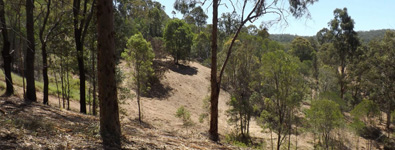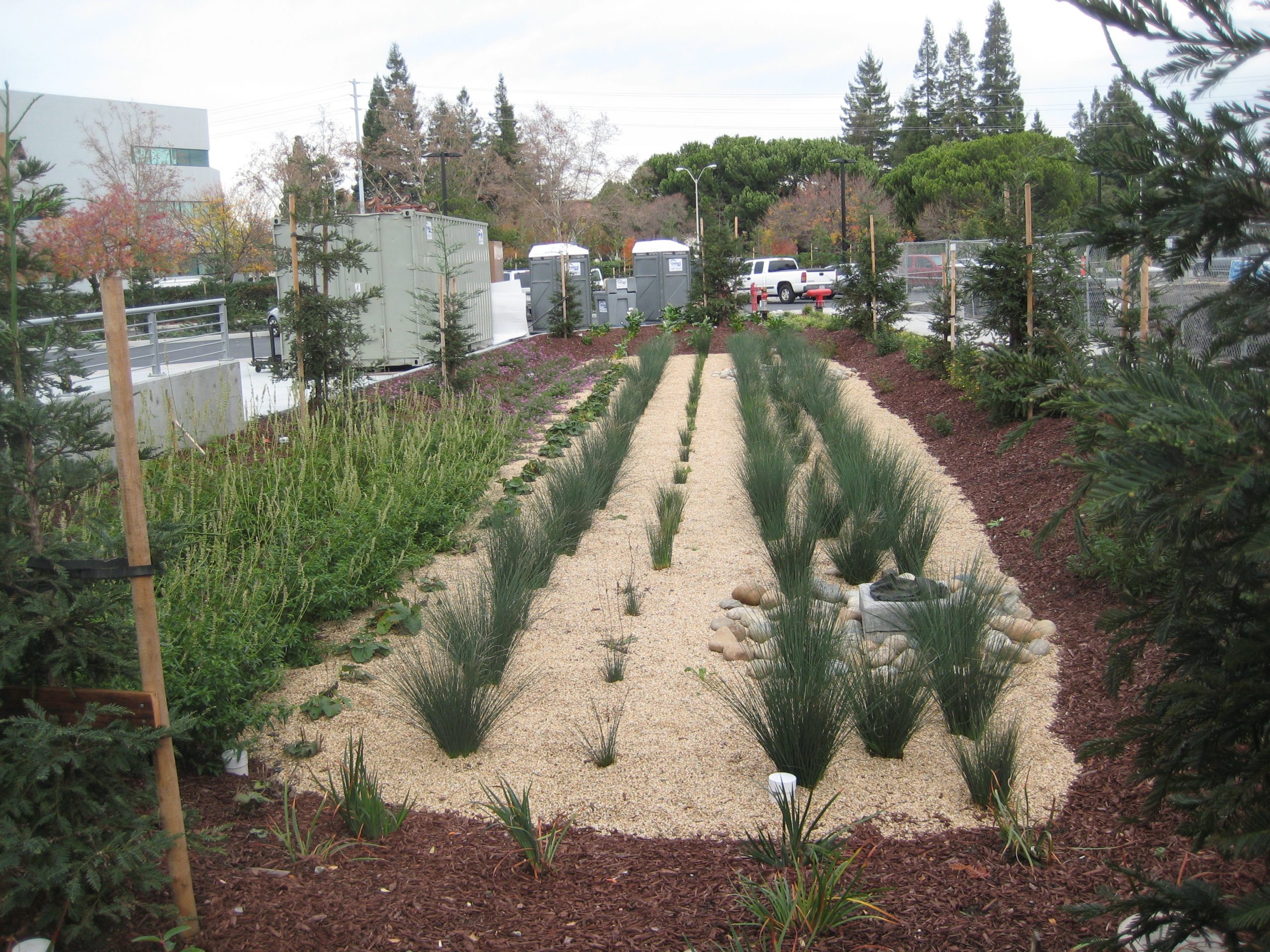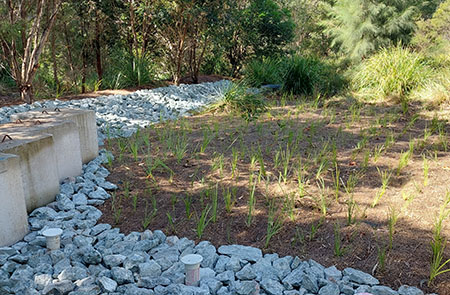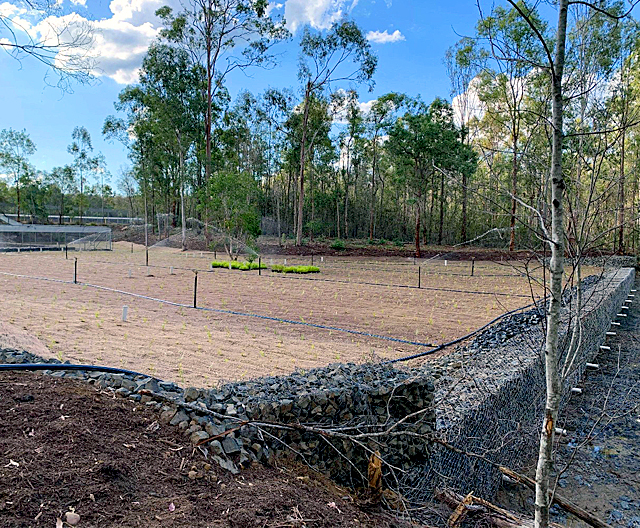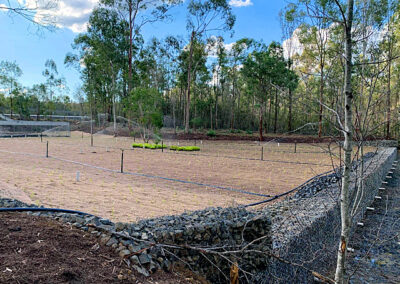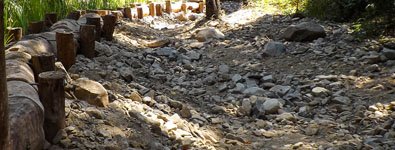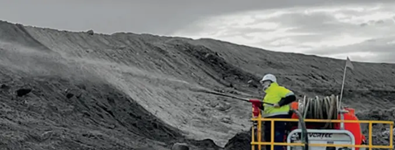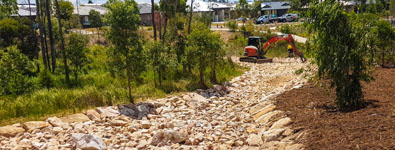YEARS EXPERIENCE
Expert Bioretention Basin Services
Regular Maintenance to meet Council City Plans
The implementation of urban stormwater management systems has radically changed over recent decades. With emphasis now being placed on water sensitive urban designs in Brisbane, bioretention basins, constructed wetlands and sediment ponds are a critical element of city design.
At Total Environmental Concepts, we are experts with over 38 years experience in the field. Not only are we capable of assisting with the construction of wetlands, bio basins and sediment ponds, we are also able to ensure they are maintained effectively over time. Routine cleaning and maintenance are paramount to making sure the systems are working as expected and our team are experts at getting them back into tip-top shape.
We have specialised equipment that is difficult to access in Brisbane. Our track tippers and other track machines are very sturdy, do not get bogged as easily and can work in harsher environments than the other machines available. They enable our team to be very efficient when working on such projects.
For more information on our company, our commitment to safety and quality of work, please download our capability statement.
Developers: Receive your bond faster post-construction
As part of any new development in Brisbane, bioretention basin construction must be taken into account. With councils focusing on water sensitive urban designs, there’s no way around it for developers.
What’s more, the bond you pay in order to begin construction is returned upon a condition requiring the cleaning and maintenance of the bio basin affected by your development activities.
We can help you secure your bond faster. Our team has specialist equipment and knowledge on bioretention basin construction, cleaning and maintenance. We can help you get it all back into tip-top shape post-construction so you can secure the return of your development bond as soon as possible.
Studies have indicated that pollutant runoff increases substantially following the development of a site. Pollutants such as sediment, nutrients (primarily nitrogen and phosphorus), oil, grease and trace minerals are byproducts of development.
Bioretention areas are used to manage pollutant removal efficiency from development. That’s why designers can incorporate bioretention areas into the landscape to remove such pollutants from many sources. Contact us if you would like to get your development bond back as soon as possible.
Landscapers & Contractors
If you have secured a contract relating to the construction, cleaning or maintenance of bioretention basins, wetlands or sediment ponds we can help. We are a top choice for contractors when it comes to collaborating on such projects as we have over 38 years experience, state of the art machinery and a wealth of expertise.
We also have the skills to take care of the things your team may not be able to cover. If you land a contract you don’t have the manpower or equipment to fulfil on your own, reach out to our experienced team today!
Bioretention Basins
Bioretention basins are areas used to slow down and treat on-site stormwater runoff. They are generally landscaped areas designed as depressions or shallow basins which direct the flow of water.
Stormwater is directed to the basin before going through a drip feeding and filtration process. A number of physical, biological and chemical processes are used to slow the flow of the water while also cleaning it and filtering out any contaminants and pollutants.
Once the water is slowed and cleaned, it is allowed to infiltrate native soils or it is directed to nearby stormwater drains.
BIOBASINS COMPLETED
Bio Basin Design Considerations
Bio basin designs can vary widely due to site conditions, landscape limitations and the designer’s preferences. Successful bioretention basin design depends on many factors. Consultants must work closely with the landscape architecture and review the development site plans in great detail.
Good designers also consult frequently with on the ground teams responsible for maintaining the systems so that their designs can withstand the test of time.
At Total Environmental Concepts, we work closely with those involved in bio basin design and assist them with creating designs that will ensure success and cost-effectiveness for many years to come.
The most important design features for bio basins include:
- Pretreatment – Facilitates the removal of heavy sediments and pollutants in stormwater prior to entering the filter media. This reduces clogging of the filter and allows the asset to remain cost-effective by reducing the cost of maintenance.
- Treatment Areas – These should include a mulch layer above the engineered soil bed and a ponding area to store small water quantities temporarily while sediment drops and water flow is slowed down.
- Water Conveyance – Great designers should ensure that stormwater flows do not cause erosion at any stage before, during or after treatment. Additional conveyance recommendations would be to use an underdrain system to take water to the storm drain system. An overflow system is also helpful in times when rainfall and runoff levels are higher than the bio basin system can withstand.
- Maintenance Considerations – Easy access is essential to good design. As maintenance experts, we work with designers to ensure our staff and machines can easily and safely enter the bioretention area to complete maintenance safely and cost-effectively.
- Landscaping – Choosing the correct landscaping materials is critical to both the function and design of bio basins. Use native plants where possible and create an environment where they can thrive against invasive species.
Chat with our team if you need any tips on the best bioretention design practices that lower ongoing maintenance costs and ensure longevity.
Bioretention Basin Maintenance and Cleaning
With newly constructed bio basins, maintenance and repairs must be performed more regularly to ensure vegetation is establishing correctly and there are no filtration blockages occurring. Routine maintenance is suggested at least once before asset handover to the council and then regularly within the first two years after off maintenance.
Once the system becomes more established, routine maintenance is recommended within every 3-5 years. These inspections and maintenance will ensure the bio basins continue to function correctly.
Effective maintenance of a new asset includes watering plants daily for at least two weeks as well as:
- Re-mulching certain areas
- Mowing areas with turf or overgrown grass
- Assessing plant diseases and treating them
- Watering plants during drought periods
- If ponding of water lasts longer than 2 days, removing top layer and cleaning or replacing affected areas
On a monthly basis, it is advised that each basin is evaluated and maintained if any problems arise. Litter and plant debris will need to be removed an eroded areas repaired in order to ensure optimal function of the bio basin.
Once or twice a year it is also recommended that each basin is inspected for dead and diseased plants. Replanting of these will be needed. New mulch will also be needed in areas it has washed away or is not performing correctly. Tree stakes and wires will also need replacing from time to time, as needed.
Our team are experts at maintaining bioretention systems. Not only do we have years of solid industry experience behind us, we also have specialist equipment that allows us to be more cost-effective and offer safer operations.Our tracked machines add a level of safety no other machines can when operating in wet or difficult terrain as they protect against slipping and sliding. They also allow us to complete jobs faster than if we only relied on tyre bobcats and tippers.
Chat with our team today if you’re looking for a top team to maintain bio basins on your property. We work with developers, councils, landscapers and other environmental contractors.
Bioretention Basin Costs
Bioretention basins are not cheap. Construction costs for a basin range from $5,000 to $50,000 depending on the area it covers. The long term costs associated with maintenance and ensuring optimal performance are also worth considering as these are affected by the design and construction of the basin.
Good bio basin designers start with the end in mind and include some of the above suggestions to ensure the basin is built with longevity in mind. Taking shortcuts usually ends up in very high maintenance costs.
Exact costs will depend on your region and can vary due to the following factors:
- The existing landscape and the quality of the available soil on the site
- Land prices, bioretention systems use more land than other stormwater management practices usually would
- Council costs, licenses and permits required
- In the case of an early handover to council, there will be a cost additional to the bond given to council
- Design and construction costs
When considering the costs of bioretention systems, it helps to consider that the basin will most likely be landscaped in a traditional manner. Associated landscaping costs can, therefore, be treated separately to the cost of the construction of the basin.
Considering accessibility to the asset and other factors influencing long-term maintenance in advance could also save future costs. The bioretention basin maintenance should be on par to what a similar sized landscaped area would be if it is built and designed correctly. If there are accessibility or quality control issues, this could greatly impact the costs of ongoing bio basin maintenance.
How does bioretention work?
Bio basins and other systems capture rainwater and stormwater runoff and guide it through a filtration series before it flows into natural and sensitive waterways. Stomwater collects a number of contaminants and pollutants as it flows along pavements, roads, rooftops and other constructed areas.
As the runoff flows through a prepared soil medium, it is filtered. This soil medium consists of layers including a grass buffer strip, sand bed, ponding area, organic or mulch layer, planting soil and plants.
The runoff first passes over or through a sandbed which slows the water’s flow velocity and distributes the runoff evenly along the ponding area. When the water capacity of the basin is reached, stormwater begins to pool at the surface of the planting soil.
Excess water can be funneled either through:
- Infiltration into the subsoil (infiltration design)
- By the means of an underdrain (filter design)
- A combination of both infiltration and filter design
Elements of Bioretention Systems
Bioretention systems are normally made up of a number of elements.
- Grass buffer strip – Its purpose is to reduce runoff velocity and remove suspended solids.
- Vegetation – Help remove water and extra nutrients.
- Shallow pond areas – Store excess stormwater flows and helps settle sediments and other water pollutants.
- Mulch – Encourages the breakdown of petroleum based pollutants and hydrocarbons. It also helps reduce soil erosion and filters pollutants.
- Man-made soils – Support vegetation growth as well as nutrient uptake and water storage. Generally, engineered soils include a form of clay base to assist with the absorption of nutrients, hydrocarbons and heavy metals.
- Sand bed – Provides drainage and allows the planting soil to be aerated. It can also help flush out pollutants.
- Under-drains – Guides extra treated water to the stormwater drainage system or receiving waters.
Extended Detention
When stormwater enters a bioretention basin, it gathers over the surface of the filter media for a short time. It can gather up to a depth between 200-400mm.
By holding water through extended detention, flow velocities are more easily managed over the surface of the filter media. The overall volume of stormwater runoff that can be trateade is also increased. Extended detention, also referred to as ponding depth, is created by raising inlet pits (overflow pits).
Hydraulic Structures
- Also known as overflow pits, these structures exist for flooding and heavy rainfall events that are beyond the capacity of the bioretention system.Stormwater will flow through the overflow pits, also referred to as bypass channels, rather than clogging up the filter media. Hydraulic structures protect the surface of the filter media from high velocity runoff that can dislodge pollutants or scour the vegetation.
Transition and Drainage Layers
Beneath the filter media is a transition layer. The transition layer is made of coarse sand and its function is to stop the filter media from filtering into the drainage layer. Typically, a transition layer is about 100mm deep and rests above the drainage layer and underdrains.
The drainage layer is typically 200mm deep and consists of fine aggregate between 2-4mm. The function of this layer is to collect all the treated water from the base of the bio basin and funnel it to the under-drains.
Under-drains are typically perforated and slotted with PVC or ag pipes.
Filter Media
Pollutants experience the highest level of filtration when they encounter the filter media layer of a bio basin. The filter media layer has a flat surface level which offers fine filtration along with the supporting vegetation.
The vegetation is a key element. It not only improves filtration but it also:
– keeps the filter media porous,
– provides substrate for biofilm to form and
– takes up some nutrients and pollutants.
In order to support vegetation, the filter media needs to be deep enough with a typical depth between 600-1000mm. A minimum depth is around 400mm.
YEARS EXPERIENCE
CONTACT
TOTAL ENVIRONMENTAL CONCEPTS
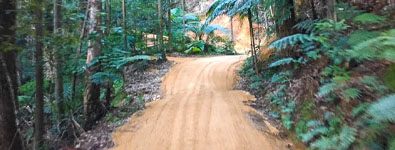
TRACK AND FIRE TRAIL CONSTRUCTION
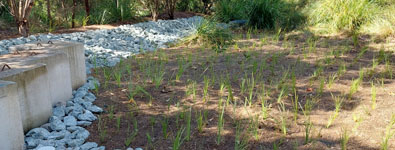
BIORETENTION BASIN MANAGEMENT
